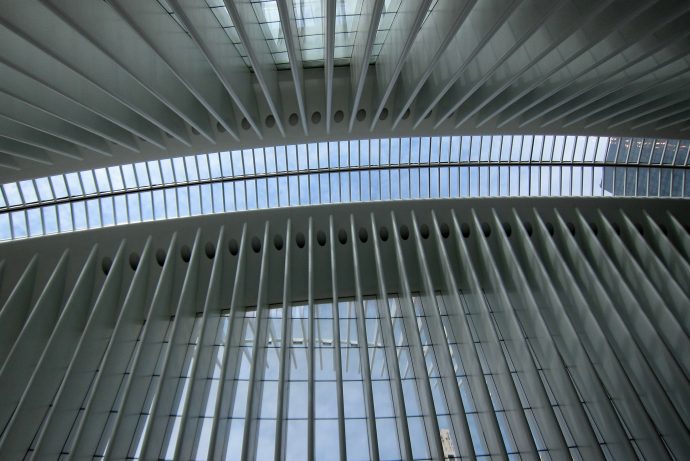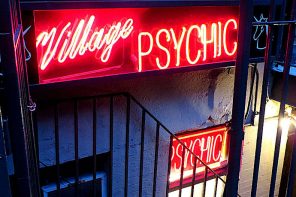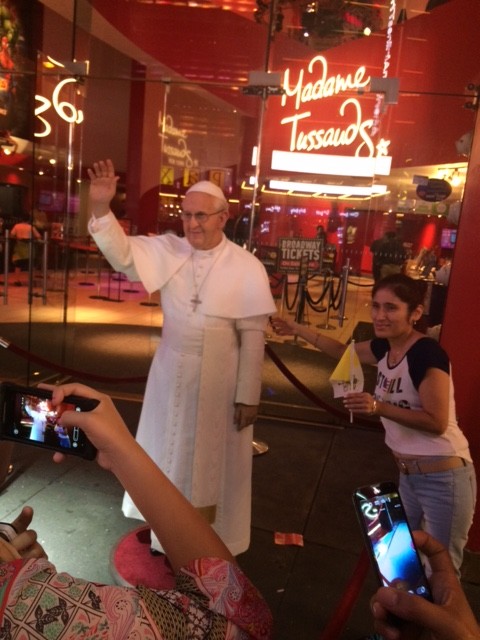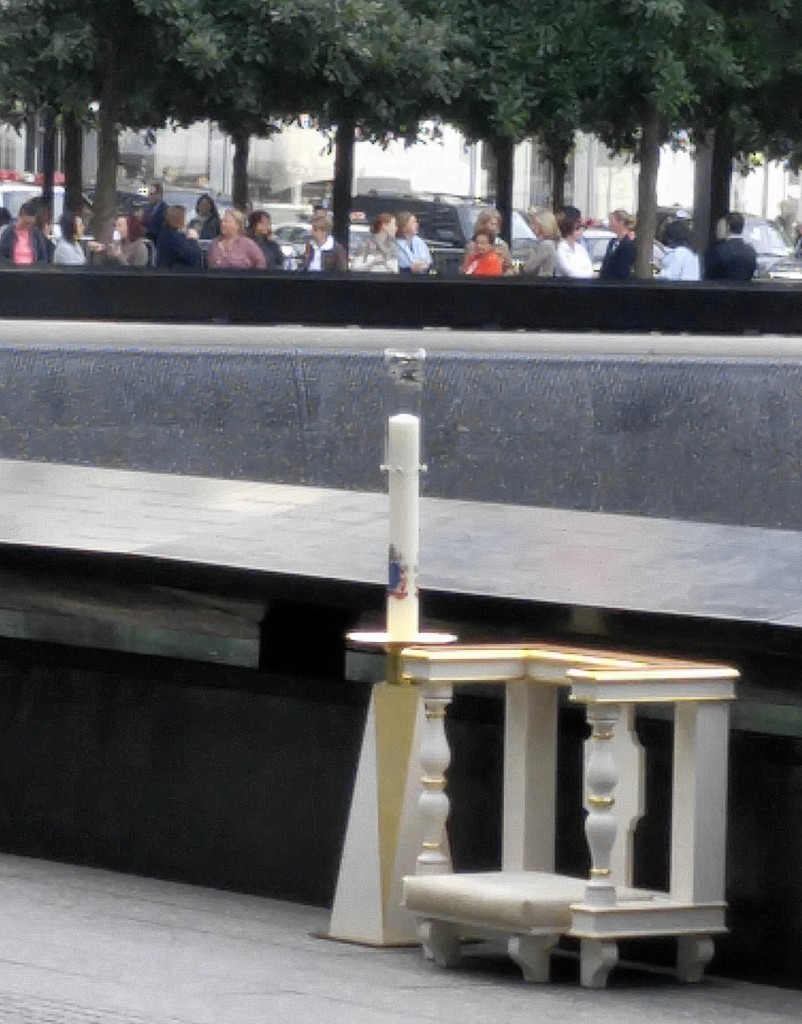There are many ways in which memorials to the dead illustrate poignant principles for the living, but the World Trade Center Transportation Hub’s architectural centerpiece, named the “Oculus,” is an unsightly and inappropriate monument.
The space is part of the newly-constructed campus—the WTC Hub—that has been in development since the attack that destroyed the World Trade Center in 2001. But what the Oculus brings to the memorial area bears no emotional awareness of the attack at all. The architecture is decadent and extravagant, costing $4 billion (mostly at public expense) to build—yet there are no benches and few accommodations to make it a welcome place for anyone except the city’s wealthiest and, of course, tourists.
From the outside, the Oculus as been likened to “a great white bird.” But the structure, as I see it, is shaped like two lids of an eye.
White beams, which also form the ceiling of the interior, look to be bending outward like plumped white lashes, revealing the glass-domed roof of the Oculus space like a giant eyeball—a single oculus, like the Eye of Sauron in Lord of the Rings. Getting inside can be an epic quest, if you don’t have directions, as there are no signs from the sidewalk level pointing the way. Having at last entered the space, your journey is illuminated by the bright white light of an immense marble cavern with towering white stone beams overhead.
The visual effect is that of a brilliant white church interior with white roof beams. Or at another level of metaphor, the interior is the belly of a giant whale, with ribcage-like beams overhead—like Moby Dick’s great white whale, inspired by both the biblical book of Jonah and the American whale-hunting industry. The oil of slaughtered whales literally fueled the Industrial Revolution and the birth of modern capitalism. But Melville’s phantom sperm whale also held the darker symbolism of the potentially fatal power of the uncontrollable forces of nature.
The Oculus, the white belly of a capitalist beast, is an architecturally-glorified mall that houses luxury stores like Michael Kors and Kiehl’s, accessible only to the richest of tourists and Wall Street locals, at the literal center of the U.S. economy.
Speaking of accessibility, the glamorous glass elevators of the mall only go between the upper floors—they do not reach the main level. There are only freight elevators in the hidden recesses of the Oculus to cart visitors with mobility impairments and others to their destinations, out of sight and out of mind from the immaculate lobby.
The striking purity of the Oculus’s sparkling-white interior has little in common with other New York public transit spaces. Grand Central Terminal, for example, with its lovely chandeliers, constellation ceiling mural, and central clock visible to all, is a welcoming hub of transportation in a diverse and vibrant city. There’s no clock in the Oculus; the closest thing you’ll find is a Rolex store.
The Oculus alienates all except the wealthiest of visitors. The giant eyeball says to all others, “You only wish you could be part of this.”
The proud twin towers of the World Trade Center proclaimed the dominance of New York City’s finance industry. But what we remember is the horrifying day all the unsuspecting people in those towers were attacked—and the number of New York’s finest who lost their lives helping people to safety.
This is a city that values sticking up for one another. We don’t look back on 9/11 with fond nostalgia for our financial monoliths; we remember the pain, the courage in the face of it, and how everyone came together.
If a retired cop or fireman who was injured on 9/11 has to use a back-alley freight elevator to access it, the fact is that the Oculus does not bear appropriate witness to the sacredness of human life that makes that day worth remembering.





